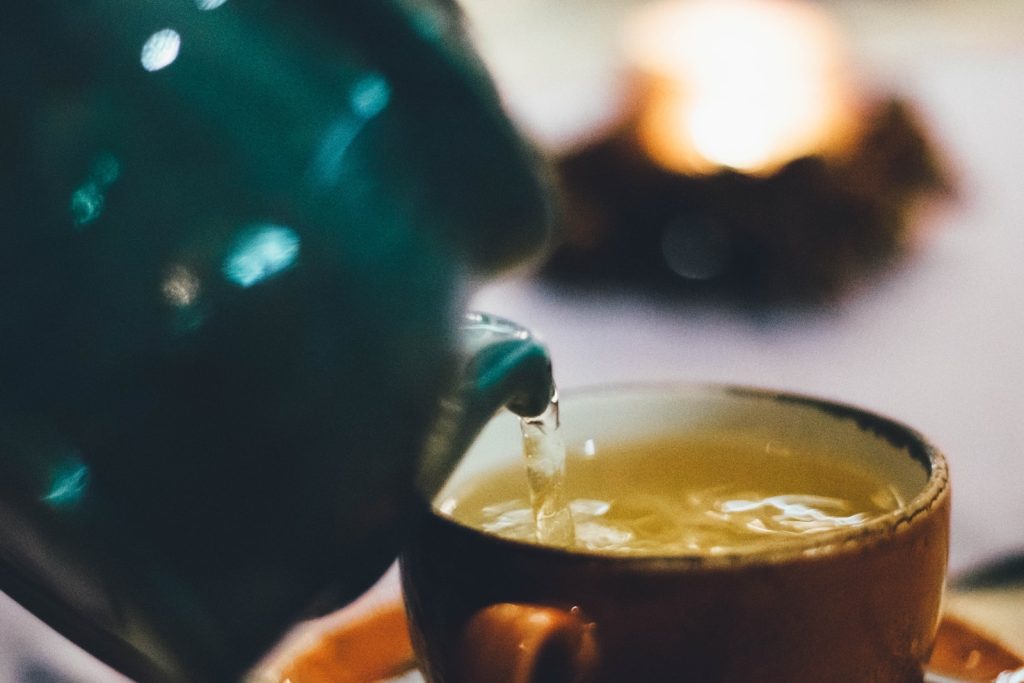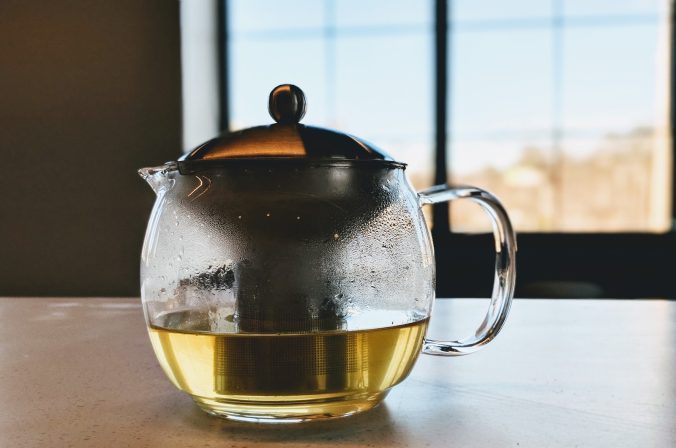Table of Contents
- Gongfu-Style Brewing: A Precise and Intense Method
- Western-Style Steeping: A More Relaxed Approach
- Matcha Preparation: Whisking Powdered Tea to Perfection
- Specialized Teaware: Elevating the Tea-Drinking Experience
- Experimenting with Different Brewing Techniques: Finding Your Perfect Cup
- Frequently Asked Questions
- Conclusion
Are you a tea lover looking to elevate your tea-drinking experience? Look no further than mastering various tea brewing techniques.
Whether you prefer the intense and precise gongfu-style brewing, the more relaxed Western-style steeping, or the delicate and frothy matcha preparation, there’s a method for every preference.
Gongfu-style brewing involves using small teapots and multiple infusions to bring out the complex flavors of high-quality teas. It requires precision and attention to detail but yields an incredibly flavorful and aromatic cup.
On the other hand, Western-style steeping is a simpler approach that involves steeping large quantities of tea in a teapot or mug for several minutes.
Matcha preparation is unique in that it uses powdered green tea whisked with hot water into a frothy drink. And with specialized teaware such as gaiwans, yixing clay pots, and chasen whisks, you can enhance your tea-drinking experience even further.
So why settle for just boiling water and a teabag when you can explore these different brewing methods to find your perfect cup?
Gongfu-Style Brewing: A Precise and Intense Method
You’re in for a treat with this intense and precise brewing style. It’s all about taking your time, being present, and savoring each sip.
Gongfu-style brewing is a traditional Chinese tea ceremony that requires patience, attention to detail, and skill. To begin the process, choose high-quality loose leaf tea and prepare your teapot or gaiwan by rinsing it with hot water.
Then, add the tea leaves and pour hot water over them. The first infusion should only last for a few seconds before pouring it out into cups or pitcher. This is known as the ‘awakening’ infusion which removes any impurities from the tea leaves.
After this initial step, you can begin steeping the tea for longer periods of time while enjoying its complex flavors and aromas. Gongfu-style brewing allows you to fully appreciate the nuances of each individual tea variety through multiple infusions.
The small teapot or gaiwan used in this method concentrates the flavor of the leaves resulting in a more robust taste profile. So next time you want to take your tea-drinking experience to another level, try Gongfu-style brewing!
Western-Style Steeping: A More Relaxed Approach
If you’re looking for a more laid-back approach to enjoying your tea, the Western-Style Steeping section may be just what you’re after. Unlike gongfu-style brewing, which requires a precise and intense method of preparation, western-style steeping is more relaxed and forgiving.
This method involves steeping loose leaf tea or tea bags in hot water for a certain amount of time at a specific temperature. Here are some things to keep in mind when using the Western-Style tea Steeping technique:
- Loose leaf vs. tea bags – While both options work well, loose leaf tea tends to have a stronger flavor because it contains larger pieces of leaves that can fully expand during steeping. Tea bags may be more convenient but often contain smaller particles that don’t fully unfurl.
- Steeping time – The amount of time you let your tea steep will depend on the type of tea you are using. Black teas typically require 3-5 minutes while green teas only need 1-2 minutes. Herbal teas can vary greatly and may require up to 10 minutes or more.
- Temperature – Different types of teas also require different water temperatures for optimal flavor extraction. For example, black teas should be brewed with boiling water while green teas do best with water around 160-180°F (71-82°C). It’s important not to use boiling water for delicate teas as this can result in bitterness or astringency.
Matcha Preparation: Whisking Powdered Tea to Perfection
In this section, we’re going to learn how to create a perfectly frothy and creamy cup of matcha by whisking a fine powder with hot water using a special bamboo tool. Matcha is a finely ground powder made from shade-grown tea leaves. It has a unique flavor that’s both vegetal and slightly bitter, with hints of sweetness.
To prepare matcha in the traditional way, you’ll need some specialized tools: a bamboo scoop (known as a chashaku), a ceramic bowl (known as a chawan), and most importantly, a bamboo whisk (known as a chasen). The whisking technique involves vigorously whisking the matcha powder with hot water until it becomes frothy and creamy. This creates an emulsion that evenly distributes the tea particles throughout the water, resulting in its signature texture and taste.
The flavor of your matcha can be adjusted based on personal preference or occasion. For instance, adding more water results in weaker tea while reducing the amount makes it stronger. You can also experiment with different types of milk such as almond or coconut for added creaminess.
With these techniques under your belt, you’ll be able to craft delicious cups of matcha every time!
Specialized Teaware: Elevating the Tea-Drinking Experience
Using specialized tools like a chashaku, chawan, and chasen can elevate the enjoyment of your tea by creating a unique and authentic ritual that enhances the flavor and texture of your brew.
Teaware accessories are designed to bring out the best in different types of teas. For example, a kyusu teapot is perfect for brewing Japanese green teas because it has a mesh strainer that allows for maximum infusion without letting any leaves escape.
Teapot designs also play an important role in enhancing your tea-drinking experience. A yixing teapot is made from clay that absorbs the flavors and aromas of the tea over time, creating a more complex and nuanced brew with each use. On the other hand, glass teapots allow you to watch as the leaves unfurl and release their flavors into the water, adding visual interest to your tea ritual.
Whether you prefer traditional or modern designs, investing in high-quality teaware will not only improve your brewing technique but also make every cup of tea feel like a special occasion.
Experimenting with Different Brewing Techniques: Finding Your Perfect Cup
Experimenting with various brewing techniques can lead to the perfect cup of tea, allowing you to fully appreciate the unique flavors and aromas of different types of tea.
One important factor to consider is brewing temperature. Different teas require different temperatures for optimal flavor extraction. For example, black teas should be brewed at a higher temperature around 200-212°F, while green teas are best steeped at a lower temperature around 160-180°F.
Another key element in brewing the perfect cup is steeping time. The longer you steep your tea, the stronger it will taste. However, over-steeping can result in bitter and unpleasant flavors.
Generally speaking, black teas need to be steeped for 3-5 minutes, while green teas only need 1-3 minutes. Oolong and white teas fall somewhere in between with recommended steeping times ranging from 2-4 minutes.
By experimenting with different brewing temperatures and steeping times, you can find your ideal balance and enjoy a perfectly brewed cup of tea every time.
Frequently Asked Questions
When it comes to gongfu-style brewing, Oolong varieties are the best-suited teas to brew.
The Gongfu ceremony involves using small teapots and multiple infusions, which accentuates the flavor and aroma of these teas.
The key to achieving this is by having the right brewing equipment, Gongfu style. Using a Gaiwan or Yixing clay teapot ensures that you get the most out of each infusion as they retain heat well and bring out the tea’s nuanced flavors.
Overall, if you want to experience tea in all its glory, then mastering gongfu-style brewing is a must!
Using specialized teaware can actually offer health benefits to your tea-drinking experience. Specialty equipment such as clay pots, Yixing teapots, and the like are designed to enhance the flavor and aroma of your tea while also having a positive effect on your health.
Clay pots, for instance, have been known to release minerals into the water that aid in digestion and boost the immune system. Additionally, using a dedicated teapot or gaiwan for each type of tea ensures that there is no cross-contamination of flavors, allowing you to fully appreciate the unique characteristics of each tea.
So not only do these pieces add an extra level of elegance and sophistication to your tea routine but they also offer health benefits too!
How do I know which water temperature is best for steeping different types of tea?
To make the perfect cup of tea, it’s important to know which water temperature is best for steeping different types of tea.
The general rule of thumb is that black teas require boiling water, while green and white teas require water between 160-180°F. Herbal teas can be steeped in boiling water or slightly below.
It’s also important to pay attention to the steeping duration, as over-steeping can result in a bitter taste. Generally, black teas should be steeped for 3-5 minutes, while green and white teas only need 1-3 minutes.
Herbal teas vary in their recommended steeping time depending on the blend.
With this simple water temperature guide and steeping duration tips, you’ll be able to brew a delicious cup of tea every time!
Can I use any type of milk when preparing matcha latte?
When it comes to making a matcha latte, there are a variety of milks you can use to achieve different flavors and textures. For traditionalists, whole milk is the way to go as its creamy texture complements the earthy notes of matcha.
However, for those looking to cut down on dairy or experiment with new tastes, alternative non-dairy milks such as oat milk or almond milk can be used instead. Oat milk adds a slightly nutty flavor while almond milk provides a subtle sweetness.
It’s important to note that each type of milk will produce a unique taste and texture in your matcha latte, so it’s worth trying them all out to see what works best for your palate.
What is the best way to store tea leaves to maintain their freshness?
To keep your tea leaves fresh and preserve their flavor, it’s important to store them properly.
One of the most important tea storage tips is to keep your leaves in an airtight container away from light, heat, and moisture.
A good option is to use a ceramic or glass jar with a tight-fitting lid.
It’s also best to buy smaller quantities of tea so that you can consume them within a few months of purchase, as even well-preserved tea will eventually lose its freshness over time.

By following these simple steps, you can ensure that every cup of tea you brew has the optimal flavor and aroma.
Conclusion
Congratulations! You’ve now mastered different tea brewing techniques that will elevate your tea-drinking experience to a whole new level.
From the precise and intense gongfu-style brewing to the more relaxed Western-style steeping, you now have a comprehensive understanding of how to brew tea using different methods.
You’ve also learned about matcha preparation and how to whisk powdered tea to perfection. Plus, with specialized teaware, you can further enhance the flavor and aroma of your favorite teas.
By experimenting with these different techniques, you can find your perfect cup of tea and enjoy it in a way that suits your taste preferences.
With this newfound knowledge, you’re well on your way to becoming a true connoisseur of fine teas.
So go ahead, indulge in a soothing cup of tea brewed just the way you like it – whether it’s through gongfu-style brewing or any other method – and savor every sip!
